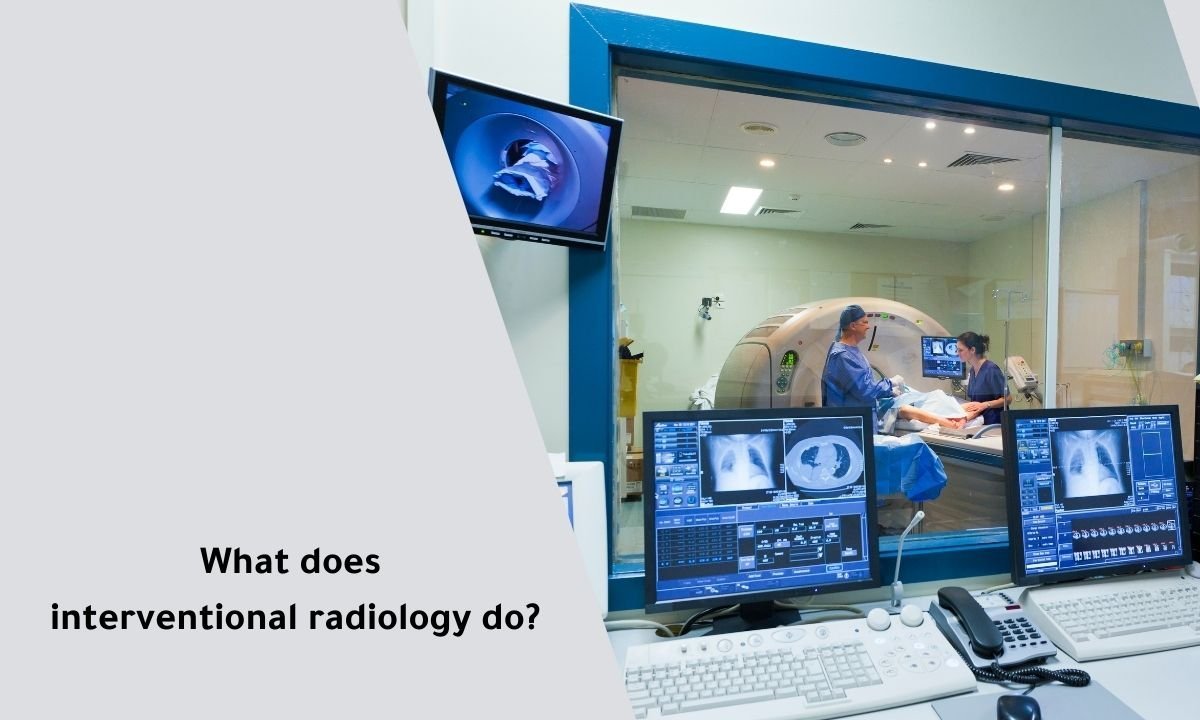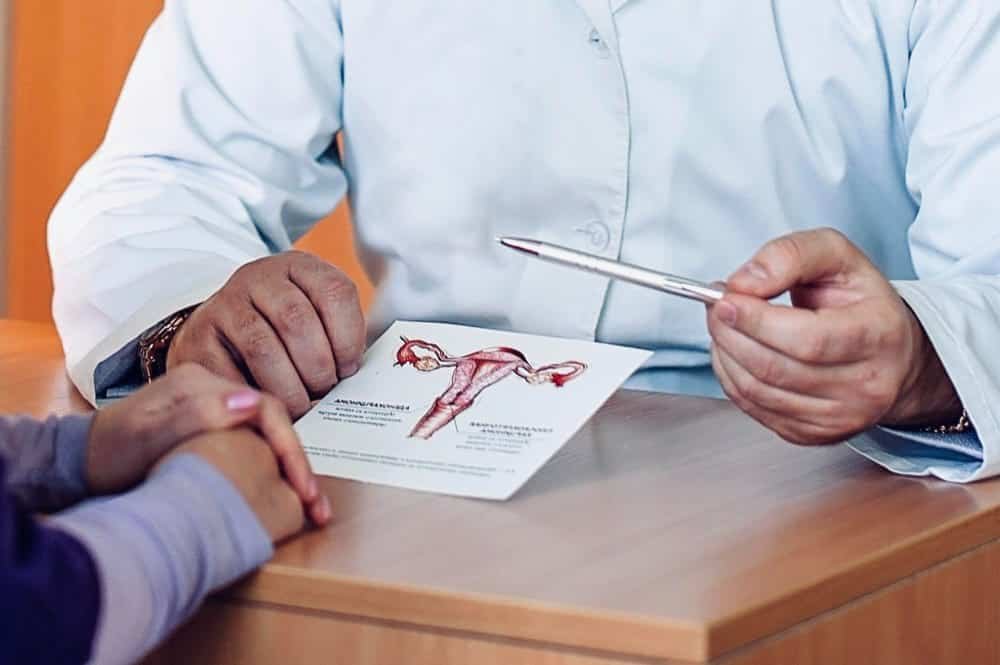Did you know that over 70% of patients can avoid surgery through minimally invasive treatments? But What does interventional radiology do exactly? Without opening surgery, this advanced field uses precise, image-guided procedures to diagnose and treat various conditions, from tumours to fibroids.

What Does Interventional Radiology Do? 🤔
Interventional radiology (IR) is a rapidly growing medical subspecialty offering a wide range of minimally invasive procedures. But what does interventional radiology do exactly? Simply put, it utilizes advanced imaging technologies like ultrasound, CT, MRI, and X-rays to guide radiologists in performing targeted treatments. Instead of traditional surgery, these procedures involve small instruments like needles, catheters, and tubes to access the body’s organs and blood vessels, providing effective treatment with minimal recovery time. For example, Dr Samir Abdel Ghaffar specializes in using these techniques to treat conditions such as uterine fibroids and liver tumours.
What is an Example of Interventional Radiology? 🎯
Imagine a patient with a liver tumour. Traditionally, this might require invasive surgery, but with interventional radiology, a radiologist can perform a procedure known as radiofrequency ablation. This involves guiding a needle directly into the tumour using imaging technology. The needle delivers energy to destroy the tumour cells without harming surrounding healthy tissue. This precise, image-guided treatment is just one example of how interventional radiology can effectively treat various medical conditions.
Interventional Radiology Procedures List 📋
Interventional radiology offers various procedures to diagnose and treat different conditions. Here are some examples:
- Angioplasty and Stenting: Opening blocked blood vessels.
- Embolization: Blocking blood flow to a tumour or abnormal area.
- Biopsies: Taking tissue samples for diagnosis using imaging guidance.
- Drainage: Removing excess fluid or pus from the body.
- Ablation: Destroying tumours using heat, cold, or chemicals.
- Thrombolysis: Breaking down blood clots in blood vessels.
- Uterine Fibroid Embolization: Treating fibroids with a minimally invasive approach.
These procedures are performed by highly trained, board-certified physicians like Dr. Samir Abdel Ghaffar, who use specialized techniques to ensure effective treatment with minimal discomfort. By choosing interventional radiology, patients can benefit from advanced, targeted care that offers alternatives to traditional surgery, with quicker recovery and less risk.
If you’re considering your treatment options, interventional radiology could provide the precise, minimally invasive care you need. Dr. Samir Abdel Ghaffar is here to guide you through your options and offer the best treatment tailored to your condition.
Samir Abdel Ghaffar: A Pioneer in Interventional Radiology

Dr. Samir Abdel Ghaffar is a leading figure in interventional radiology, with a career spanning over two decades. His work has significantly impacted patients’ treatment, mainly through his innovative use of minimally invasive techniques.
A Wealth of Experience and Expertise
Dr. Ghaffar’s extensive experience in interventional radiology and his deep understanding of the latest techniques position him as an authority in the field. His ability to seamlessly blend traditional methods with cutting-edge technology has led to remarkable advancements in patient care, making him a sought-after expert.
Focus on Minimally Invasive Treatments
One of Dr. Ghaffar’s key strengths is his commitment to offering minimally invasive treatment options. He enables patients to avoid the risks associated with traditional surgery by using image-guided procedures. This approach leads to faster recovery times and minimizes the overall impact on the patient’s body, ensuring a smoother and quicker return to daily life.
A Pioneer in Uterine Fibroid Embolization (UFE)
Dr. Ghaffar is especially recognized for his pioneering work in uterine fibroid embolization (UFE). This procedure has transformed the treatment of uterine fibroids, offering a safe and effective alternative to hysterectomy. Thanks to Dr. Ghaffar’s expertise, many women have preserved their uteruses while effectively managing fibroid symptoms.
A Commitment to Patient Care
Beyond his technical skills, Dr. Ghaffar is known for his compassionate approach to patient care. He takes the time to listen to his patients, ensuring they fully understand their treatment options. This patient-centred approach has earned him the trust and respect of countless individuals, making him a skilled physician and a caring and empathetic one.
What Procedures Do Interventional Radiologists Do?
Interventional radiologists are highly trained specialists who perform various minimally invasive procedures using advanced imaging technologies. These procedures are designed to diagnose and treat diseases across different organs, including the liver, kidney, and vascular system. By utilizing tools such as catheters, needles, and wires, interventional radiologists can access specific areas within the body without the need for traditional surgical incisions.
Some of the critical procedures performed by interventional radiologists include:
- Cancer Treatments: Targeted treatments like chemoembolization and radioembolization help manage liver and kidney tumours. These procedures involve inserting a catheter into the blood vessels that supply the tumour and delivering cancer-fighting agents directly to the tumour site.
- Uterine Fibroid Embolization (UFE): A specialized procedure that offers an alternative to surgery for women suffering from uterine fibroids. It involves guiding a catheter into the uterine arteries and blocking blood flow to the fibroids, causing them to shrink.
- Vascular Procedures: Including angioplasty, stenting, and thrombectomy, these treatments help restore blood flow in patients with vascular diseases. Using imaging technologies like fluoroscopy and MRI, interventional radiologists can precisely insert and guide catheters to treat blockages and other vascular conditions.
- Biopsies and Drainage: Interventional radiologists perform biopsies to obtain tissue samples for diagnostic purposes. These procedures involve guiding a needle into the targeted organ or tissue, using imaging for accurate placement. Drainage procedures help remove excess fluid or pus from areas like the liver or abdomen, reducing infection risk and improving patient health.
- Treatment of Vascular Diseases: Procedures such as angioplasty and stenting are performed to open blocked blood vessels, improve blood flow, and prevent complications related to vascular diseases.
☑️ What Is Interventional Radiology? A Quick Overview
New Interventional Radiology Procedures
The field of interventional radiology is rapidly advancing, with new and innovative procedures continuously being developed to enhance patient care. These procedures utilize cutting-edge technology and specialized instruments to provide targeted treatments with minimal invasiveness.
Some of the latest advancements in interventional radiology include:
- Prostate Artery Embolization (PAE): This innovative procedure offers a new way to treat benign prostatic hyperplasia (BPH), a common condition in older men. By guiding a catheter into the blood vessels that supply the prostate and blocking the blood flow, interventional radiologists can reduce the size of the prostate, alleviating symptoms without the need for surgical intervention.
- Y-90 Radioembolization: A targeted treatment for liver cancer, Y-90 radioembolization involves using radioactive microspheres delivered directly to the liver tumours via a catheter. This procedure combines radiation therapy with embolization, providing a powerful treatment option that minimizes damage to surrounding healthy tissues.
- Cryoablation for Renal Tumors: This procedure involves inserting a specialized needle into the kidney tumour and using extreme cold to destroy the cancerous cells. It is a less invasive alternative to traditional kidney cancer surgeries and is typically performed using imaging guidance to ensure precision.
- Mechanical Thrombectomy: A groundbreaking procedure for treating acute ischemic stroke, mechanical thrombectomy involves the insertion of a catheter into the brain’s blood vessels to remove blood clots that cause strokes. This procedure uses advanced imaging technologies, allowing for the rapid and precise removal of clots, which can significantly improve patient outcomes.
- Endovascular Aneurysm Repair (EVAR): This minimally invasive procedure treats abdominal aortic aneurysms. By inserting a stent graft through the blood vessels, interventional radiologists can reinforce the weakened area of the aorta, reducing the risk of rupture and offering a safer alternative to open surgery.
These new interventional radiology procedures are examples of how the field continues to evolve, offering patients advanced, less invasive treatment options that improve outcomes and reduce recovery times. With ongoing development and training, interventional radiologists remain at the forefront of medical innovation, providing care that is both effective and patient-centred.
How to Become an Interventional Radiologist
Becoming an interventional radiologist requires extensive education and training. Here’s a step-by-step guide:
- Obtain a Bachelor’s Degree (4 years): Focus on pre-medical biology, chemistry, or physics courses.
- Attend Medical School (4 years): Earn an MD or DO degree with coursework and clinical rotations.
- Complete a Diagnostic Radiology Residency (4-5 years): Train in diagnostic imaging and pass the American Board of Radiology (ABR) exam.
- Pursue an Interventional Radiology Fellowship (1-2 years): Specialize in interventional radiology techniques, gaining hands-on experience in procedures like angioplasty, stenting, and embolization.
- Obtain Board Certification in Interventional Radiology: Pass the ABR’s Certificate of Added Qualification (CAQ) in Interventional Radiology.
- Start Practicing as an Interventional Radiologist: Work in hospitals or specialized clinics, with ongoing education to stay current with advancements in the field.
Discover what interventional radiology does for your health. Schedule a consultation with Dr Samir Abdel Ghaffar today and learn how these advanced, minimally invasive treatments can improve your well-being.
 العربية
العربية 


